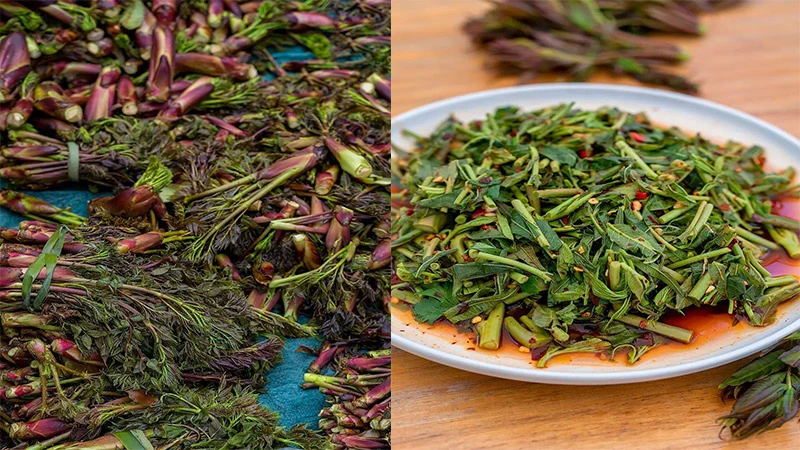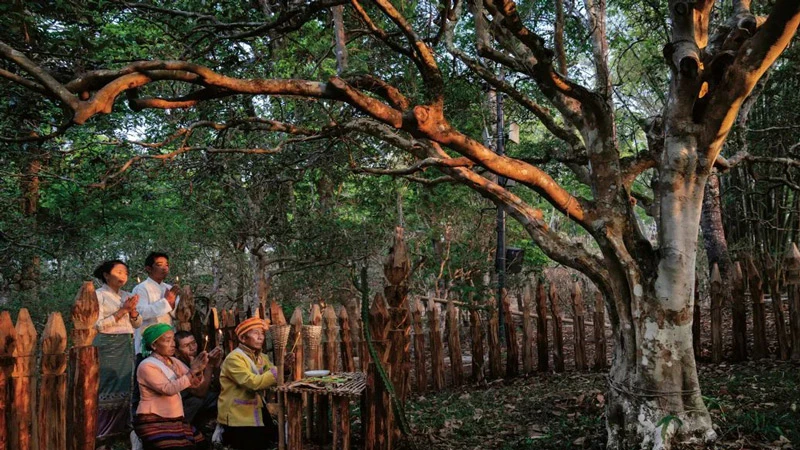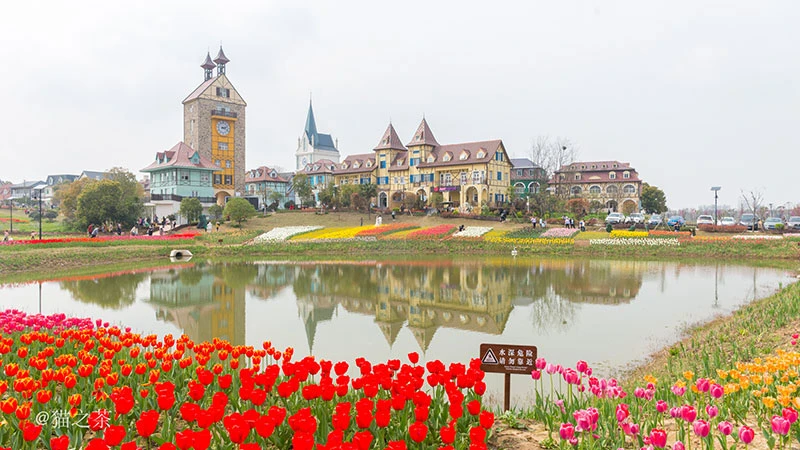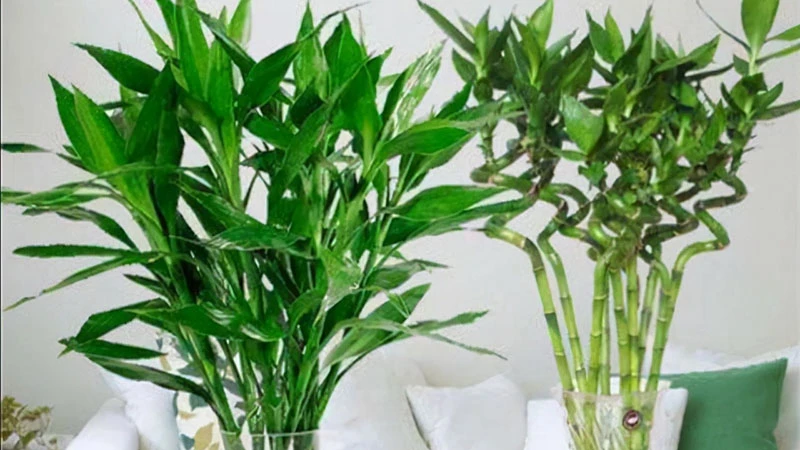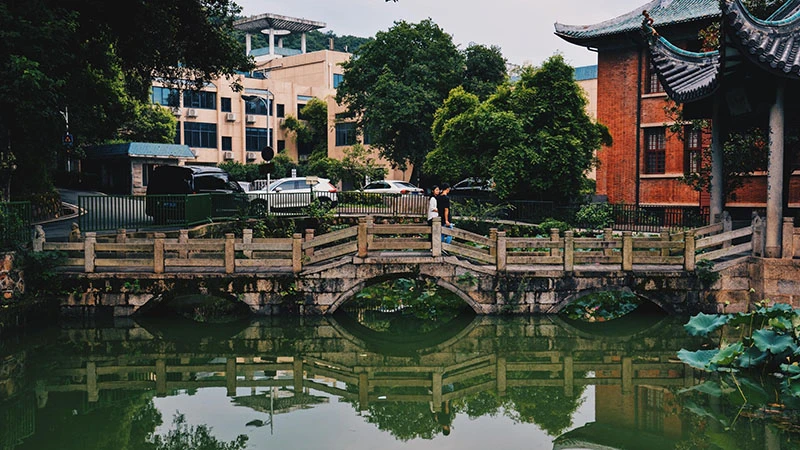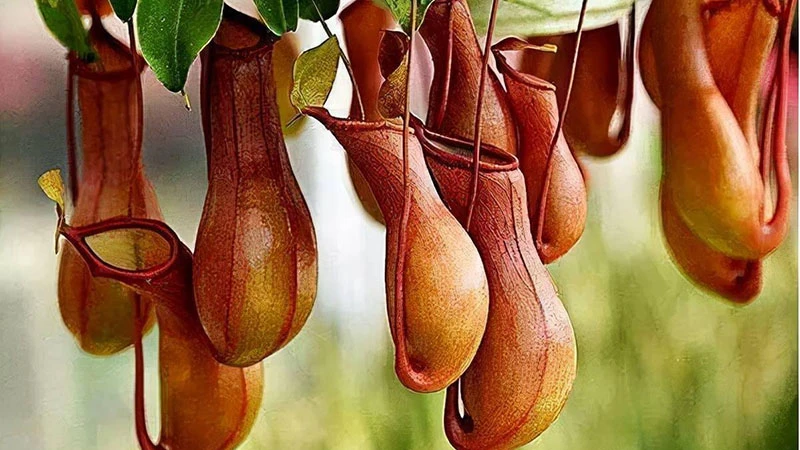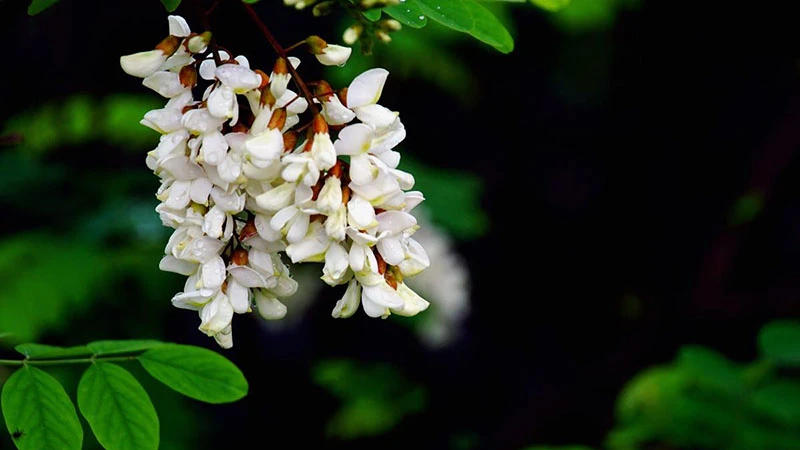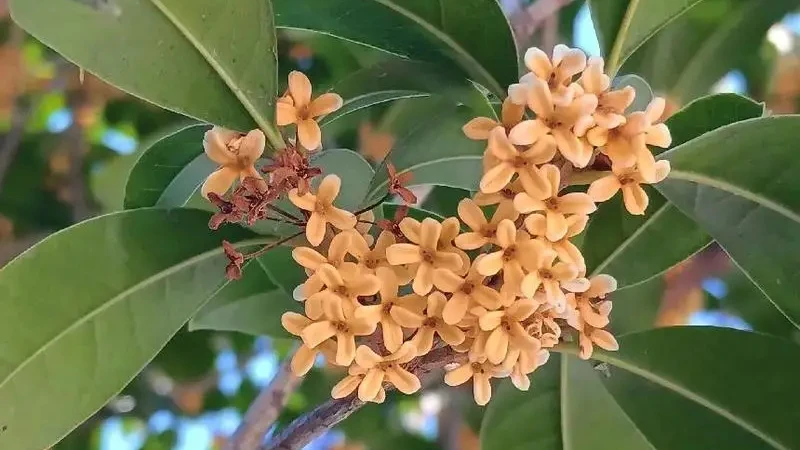-
A Chinese Spring Journey Through Budding Delicacies
As spring returns to the earth, a culinary revolution sprouts across China—one that turns thorny shoots, toxic buds, and even tree bark into poetic feasts. Join us on a journey where every bite whispers ancient legends and defies modern logic. Nature's Daredevils: Eating Buds Becomes an Extreme Sport In the misty highlands of Guizhou, spring arrives with a dare. Here, villagers forage for the tender shoots of Heshouwu (Polygonum multiflorum), a plant so toxic its roots are used in traditional rat poison. Yet, between late March and early April, its emerald-green buds become a coveted delicacy. "Timing is everything," explains Chef Yang, stirring a bowl of blanched Heshouwu buds at a rustic farmhouse near Puan County. "Pluck them too early, and they're bitter. Too late, and the toxins intensify." Served with chili oil and crushed garlic, the buds carry a crisp, herbaceous tang—a flavor locals describe as "nature's adrenaline rush." This dangerous dance with botany isn't reckless; it's a testament to ancestral wisdom passed down through generations. Meanwhile, in Shaanxi, diners flirt with another perilous pleasure: pagoda tree buds. While its fragrant white flowers are harmless, the tree's young leaves contain alkaloids that can cause dizziness if consumed raw. Undeterred,…- 0
- 0
- 44
-
Wuhan’s Cherry Blossom Season: Sakura Hotspots
In March 2025, Wuhan’s cherry blossom season has once again captured global attention, blending natural beauty with creative cultural experiences. From themed post offices to marathon collaborations, the city has transformed its sakura landscapes into a series of viral "internet-famous" destinations. This article explores the multifaceted appeal of Wuhan’s cherry blossom hotspots and their role in shaping urban tourism and cultural identity. 1. Wuhan’s "Sakura Post Office" The Sakura Post Office at Wuhan University’s School of Engineering has become an iconic symbol of the season. Designed with pink-and-white aesthetics, it integrates postal culture, campus heritage, and sakura motifs, attracting millions of visitors annually. The site features four functional zones: postal services, 文创产品区 (cultural and creative products), 文化交流区 (cultural exchange), and 茶饮休闲区 (tea and leisure) . Collectible Stamps and Souvenirs: Over 40 limited-edition文创 products are launched each year, including sakura-shaped keychains, DIY pressed-flower postcards, and metal fridge magnets. In 2025, Wuhan Post collaborated with popular IPs like Ne Zha and Garlic Bird to release over 80 themed items, blending nostalgia with pop culture . Interactive Campaigns: Activities like "集章有礼" (stamp-collecting rewards), sakura-themed photo contests, and AI-powered postcard customization stations allow visitors to create personalized souvenirs. The post office also introduced AR filters in 2025, enabling digital…- 0
- 0
- 27
-
The Sacred Pu'er Tea Practice in Jingmai Yunnan
Nestled within the lush green expanses of Jingmai (景迈) Mountain in southwestern China, the village and its surrounding tea groves are more than just scenic wonders. Here, generations of tea farmers from the Dai (傣族) and Blang (布朗族) ethnic groups have cultivated one of the oldest and most expansive tea forests in the world. For over a thousand years, these indigenous communities have adhered to traditional, nature-centered methods of tea cultivation. Among these, one tree stands out—its massive trunk, measuring 1.4 meters in diameter, and sprawling branches create an imposing crown that casts a powerful presence in the forest. Unlike the neat rows of short tea plants found in commercial plantations across China, this ancient tree grows in wild, unkempt beauty. It is here that the spiritual and agricultural lives of the tea farmers intertwine, as they pray for bountiful harvests, honoring the spirits of their ancestors, including the revered "Tea Spirit," Pai Leng (帕哎冷), who is considered the father of tea. Yuan Rong, 41, and his wife, Ke Lan Fang, 36, are part of a family that has been cultivating tea for generations. Standing before this ancient tree, they express their reverence and pride in a tradition that has…- 0
- 0
- 22
-
The 2024 Shanghai Chrysanthemum Exhibition
The annual Shanghai Chrysanthemum Exhibition is back, running from October 26 to November 26, 2024, at the picturesque Shanghai Gongqing Forest Park (共青森林公园). With the theme "Appreciating the Golden Autumn Chrysanthemum Elegance, Enjoying a Wonderful Life," this year's exhibition promises to be a feast for the senses. It combines the beauty of chrysanthemums with cultural and educational experiences that highlight the significance of this beloved flower in Chinese heritage. The exhibition showcases chrysanthemums not merely as flowers, but as a medium for connecting with nature and community. Various events and activities will be held, including citizen chrysanthemum art competitions, tastings, and charity distributions of chrysanthemum plants. These engaging features aim to enrich the overall experience of the exhibition, making it an unforgettable celebration of floral artistry. Diverse Displays: Nature Meets Art This year's exhibition will consist of three main display areas: outdoor installations, premium chrysanthemum showcases, and floral art. Each area is carefully designed to enhance the natural beauty of the forest environment while promoting a vibrant and sophisticated atmosphere for visitors. Outdoor Installation Area Located at the former Flower Art Museum, the outdoor installation area will feature eight distinct displays that integrate chrysanthemums with the surrounding forest backdrop. These…- 0
- 0
- 34
-
A Day at Wuhan Flower Expo
Discovering a Colorful Floral Paradise As the cool breeze of autumn sweeps through Wuhan, the Wuhan Flower Expo is transformed into a vibrant kaleidoscope of colors, welcoming visitors to indulge in a floral feast. Spanning over a thousand acres, this floral paradise bursts with an array of blooming flowers, including cheerful yellow sulfur daisies, delicate pink dust grass, elegant white lilies, and majestic purple cosmos. The charm of the expo lies not only in its breathtaking beauty but also in the myriad activities that celebrate the essence of autumn. This year’s festival, aptly named the “Golden Autumn Flower Fire Festival,” runs from late October through early November. It promises a delightful experience for flower lovers and families alike, making it the perfect destination for an autumn outing. A Floral Wonderland Awaits The heart of the Flower Expo is adorned with vast fields of zinnia and cosmos, captivating visitors with their vibrant hues. The most stunning displays can be found near the Ferris wheel and the entrance area known as "Four Seasons Flower Sea." This year’s zinnia blossoms have flourished spectacularly, showcasing six different colors that stand tall against the backdrop of quaint blue windmills and rustic wooden cabins. For those…- 0
- 0
- 39
-
The Resilient Beauty: Caring for Lucky Bamboo
Lucky Bamboo (Dracaena sanderiana 富贵竹), also known as “Wealth Bamboo” or “Fortune Bamboo,” is a common indoor plant cherished for its symbolic meanings of prosperity, longevity, and good fortune. Whether in homes or offices, its ability to thrive with minimal care makes it a popular choice for décor. However, keeping it healthy and flourishing requires an understanding of its needs. This guide will explore essential care tips for Lucky Bamboo, ensuring that it remains vibrant and a source of positive energy. The Biology and Growth Needs of Lucky Bamboo Originating from Central and Western Africa, Lucky Bamboo is a member of the Asparagaceae family, known for its long, green, and glossy leaves. It is highly adaptable, capable of growing in both soil and water, although the latter is more commonly preferred for indoor settings. With its impressive resilience, Lucky Bamboo tolerates low light conditions and is ideal for interior spaces with limited natural light. Its upright, sturdy stems and elegant appearance make it a staple in modern homes and offices. Despite its low-maintenance reputation, there are specific environmental conditions that contribute to its optimal growth. Light, Water, and Temperature Management One of the most vital elements in maintaining a thriving…- 0
- 0
- 37
-
Bamboo: A Life in Tune with the Flute
In the quiet countryside, life moves at a slower pace, governed by the rhythm of the seasons and the sound of nature. My cousin, raised in this world of simplicity, found his own rhythm—a melody played on a flute he made himself. His flute was not just an instrument; it was a living, breathing connection to the natural world, a voice that carried the essence of the bamboo it was born from, and the moonlight under which it was crafted. Crafting a Flute from Patience and Moonlight My cousin wasn't just a farmer's son; he was a patient artist. In his family’s backyard stood a cluster of bamboo, and from it, he would cut the most perfect, straight piece. He chose the bamboo not for its beauty, but for its uniformity—he needed the smoothest, strongest segments to shape into his instrument. The true challenge, however, was hollowing out the bamboo. This delicate work required endless patience. By day, he worked with his parents in the fields, but when night fell, under the dim glow of the moon, he became a craftsman. With nothing but a flattened piece of iron wire, he meticulously scraped away the inside of the bamboo, segment…- 0
- 0
- 33
-
The Ancient Guardians of Yuelu Mountain: Six Dynasties Pine
A Historical Giant in the Heart of Changsha In the shadow of the majestic Yuelu Mountain (岳麓山), nestled near the iconic Lushan Temple (麓山寺) in Changsha, stands a remarkable living relic—an ancient Luohan pine (罗汉松) tree, famously known as the "Six Dynasties Pine." This grand tree is not only a symbol of natural beauty but also a testament to history, believed to have been planted during the Six Dynasties period (circa 4th century). With an estimated age of over 1,740 years, the Six Dynasties Pine is the oldest tree within Changsha’s urban area, standing as a timeless guardian of the temple grounds. While the Lushan Temple is currently undergoing renovations and closed to the public, I had the rare opportunity to visit the sacred site and witness this ancient tree up close. Guided by local staff, I stood before the tree, marveling at its sheer size and grandeur. Its crown spreads across an impressive 100 square meters, and despite centuries of exposure to the elements, the tree’s leaves remain vibrant and green. The Mystique of Luohan Pines and “Pine Gate” Lushan Temple, founded during the Western Jin Dynasty in 268 AD, holds the distinction of being Changsha’s oldest Buddhist temple.…- 0
- 0
- 27
-
Pitcher Plants: Nature’s Ingenious Hunters
In the dense wilderness, where plants and animals vie for survival, one species has developed an extraordinary strategy to thrive in the most nutrient-poor environments: the carnivorous pitcher plant. Known for its vibrant, colorful appearance, the pitcher plant attracts unsuspecting insects that curiously explore its floral beauty. However, what seems like an innocent landing soon becomes a fatal mistake, as the insects slip into the plant’s slick, liquid-filled trap. Inside the plant’s “pitcher,” digestive fluids await their next meal. These fluids contain enzymes or bacteria, sometimes introduced by rainwater, that break down the bodies of trapped insects, turning them into vital nutrients. Over time, the insects’ struggle subsides as they are slowly dissolved, providing essential minerals like nitrogen and phosphates that the plant requires to survive. But what makes the pitcher plant particularly fascinating is how it manages to grow in places where most other plants can’t, like nutrient-deficient soils developed from sandstone or limestone. These harsh environments, which offer little in the way of traditional plant nourishment, force the pitcher plant to rely on its carnivorous tendencies to capture sustenance. The Unexpected Menu Expansion For years, scientists believed that the pitcher plant’s success was purely due to its ability…- 0
- 0
- 38
-
The Untapped Power of Chrysanthemum
The chrysanthemum flower, with its vibrant colors and delicate petals, has long been cherished in both Eastern medicine and culinary traditions. Known for its dual use as an ornamental and medicinal herb, it has earned a revered place in Chinese culture. From herbal remedies to delicious dishes, the chrysanthemum offers a wealth of benefits to those who know how to use it. Yet, there is much more to this seemingly simple flower than meets the eye. Let's dive into the world of medicinal and edible chrysanthemums and uncover their rich history and versatile uses. Healing with Chrysanthemums: Ancient Wisdom in Modern Times Chrysanthemum, or Chrysanthemum morifolium, comes in three primary varieties used in traditional medicine: white chrysanthemum, yellow chrysanthemum, and wild chrysanthemum. While all share similar therapeutic properties, each type has its unique strengths. White chrysanthemum is celebrated for its ability to calm the liver and improve eyesight, yellow chrysanthemum helps disperse heat and wind from the body, and wild chrysanthemum is praised for its detoxifying properties. The medicinal qualities of chrysanthemums are recognized in ancient Chinese texts, such as The Divine Farmer’s Classic of Materia Medica (神农本草经), where it is described as a top-grade herb that nourishes the blood,…- 0
- 0
- 49
-
The Resilience of Locust Trees
Every year, April ushers in a delicate and fleeting spectacle in the countryside— the bloom of locust trees. These unassuming trees burst into clusters of soft white blossoms, revealing a charm that captivates both the eyes and the palate. From afar, the flowers appear as pure white, but upon closer inspection, they possess a subtle hint of green, giving them an ethereal quality. Their gentle beauty is paired with a sweet fragrance, drawing both humans and animals into their embrace. Unlike most trees that either produce flowers for beauty or fruits for sustenance, the locust tree offers both. Its blossoms are not just a treat for the eyes but also a delicacy for the taste buds. Long revered in traditional cuisine, locust blossoms are used to make dumplings, stir-fries, and even steamed buns. The flower's duality—its visual allure and culinary utility—has made it a beloved symbol of springtime abundance. When the blossoms are in full bloom, they crowd together in dense clusters, as though competing for space on the same branch. The sight of them standing side by side evokes memories of bustling families and close-knit communities. Unlike solitary flowers that bloom in isolation, locust blossoms thrive in their togetherness,…- 0
- 0
- 33
-
Osmanthus Flower: A Delayed Scent of Autumn
This year, the fragrance of osmanthus arrived a little late. By the end of the eighth lunar month, just as I passed by the lake, the familiar aroma of the small, golden blossoms suddenly wafted through the air. A colleague nudged me, half-joking, “It’s time for you to write about the osmanthus.” Though I smiled, I hesitated. Writing about the osmanthus feels like navigating a well-trodden path. It’s a flower adored by so many that describing it in a fresh way feels almost impossible. It’s too easy to fall into clichés, which makes capturing its essence all the more elusive. As I sit down to write now, I find myself wondering how to infuse something new into a subject so well-loved, how to create a feeling of connection that is both intimate and distant. How can I write about a flower so familiar, yet evoke the kind of surprise and wonder that makes you pause? The Subtle Call of Autumn I have few memories of autumn from my youth. It’s as if the beauty of the season can only be truly understood with age. When you’re young, autumn is just a brief pause between summer and winter—its crisp winds, fallen…- 0
- 1
- 47
